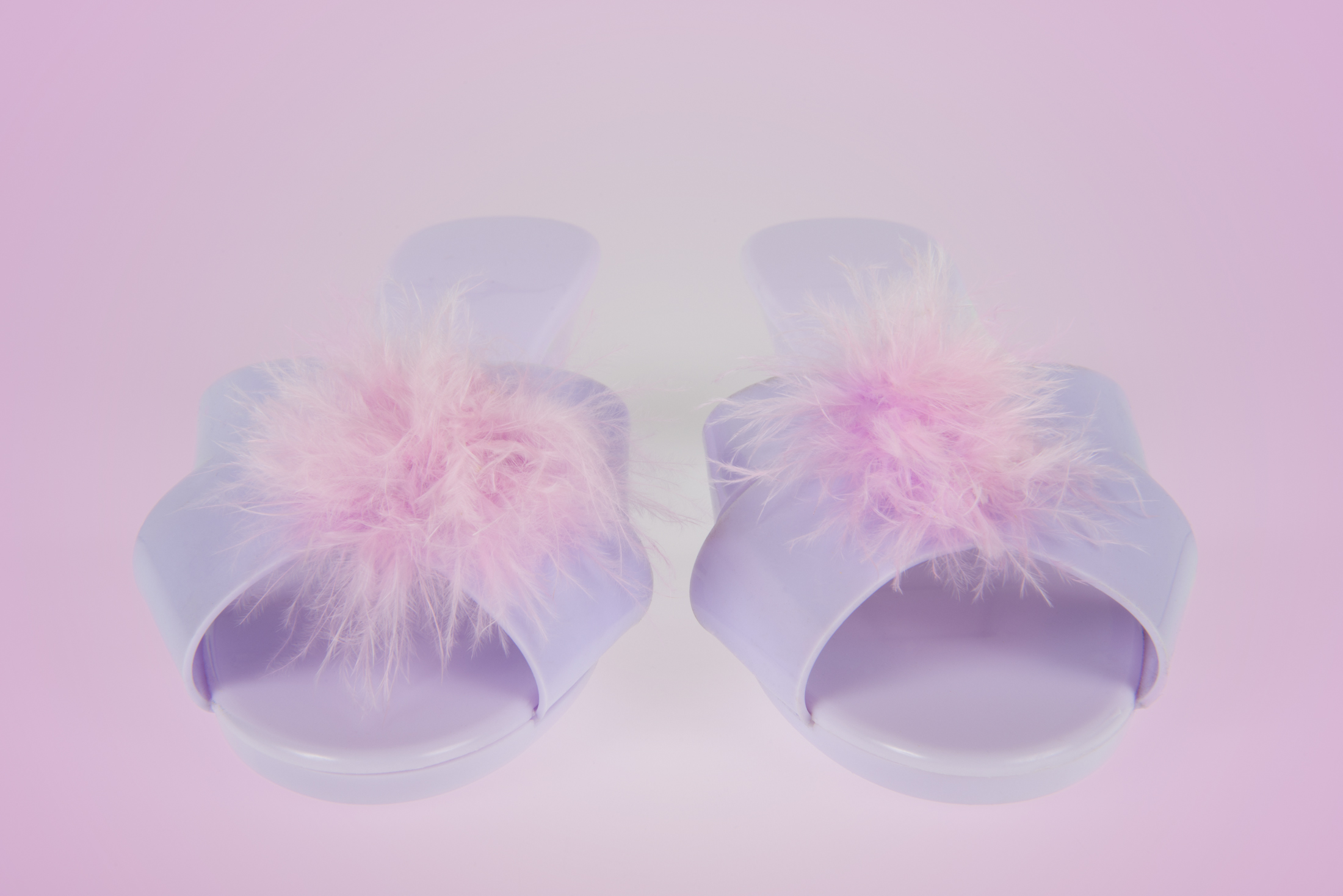
In the center of WEDGE’s triangular exhibition space, there stands a soft pink and white child’s bed frame: “It’s actually my childhood bed,” confesses artist Alyce Haliday McQueen. “It’s repainted, but those are the colors my dad chose for me as a kid.” Along with the frame, McQueen has assembled a number of found objects and pieces to both exemplify and analyze what her show’s title suggests: “Girlhood.”
“Girlhood,” not McQueen’s first solo exhibition but her first project with WEDGE, takes on a number of personalities. At its most basic, it is an ode to this thing we call girlhood: How we treat girls through the toys and objects we manufacture for them and how those objects attempt to mold girls into societally-acceptable women. On a more profound level, “Girlhood” is an exploration into the artist’s own relationship with gender-specific, childhood playthings; it doesn’t get more personal than publicly displaying your former bed.
McQueen, a young artist and educator living and working in Chicago, has a background in photography, though this isn’t entirely clear upon first examination of her latest show. “Girlhood” is McQueen’s journey into the world of three-dimensional objects; she said to me in a brief interview that she is using her photographic background to explore “how things work off the wall.” The only piece that hints at McQueen’s preferred medium is a large-scale photograph of a pink, plastic horse (“Dream Pony”), which McQueen took several years ago.

Pink is the dominant color of the exhibition, and plastic the most frequently used material. Among the more intriguing pieces, a toy shopping cart filled with candy hearts (“Real Love”), and a toy vacuum (“Happy Home”), remind the viewer that domesticity was and is marketed as child’s play. McQueen took interest in these pieces because, as she explained, there is no “boy” equivalent on the market to these kinds of toys.
Thematically, McQueen is in good company: Recently, an influx of young female-identifying artists have been grappling with the subject of femininity — it’s power, it’s inherent violence, it’s beauty — in an effort to come to terms with themselves as women and as artists. For many of them, and for McQueen, this exploration isn’t so much a “feminist” statement as it is a statement on femininity. It’s a horse of a different color. A pink horse.
With a show made up almost entirely of found objects, McQueen is slowly finding her footing beyond the flat image. “Girlhood” responds to performed femininity and how it is, often forcefully and strategically, applied to young women; it exemplifies the nostalgia and the trauma of ingrained expectation.
“Girlhood” is on view at WEDGE, 1448 W. Howard St., in Rogers Park, until September 18, 2017.







